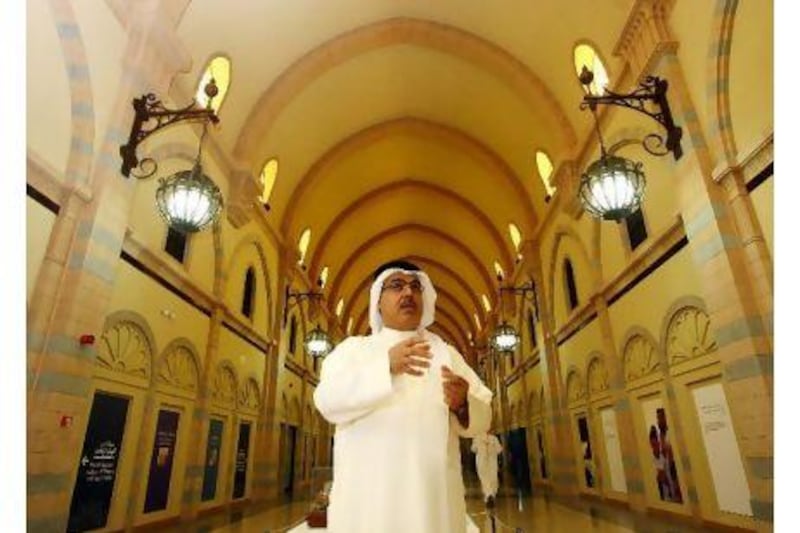SHARJAH // Fifty years ago, on the site of what is now an impressive gallery of Islamic innovations, an Emirati legend was born.
"Baeer bala ras", or the tale of "the headless camel", refers to the ghost of an animal who went on to haunt the stall of the butcher who failed to slaughter it properly.
The stall was one of hundreds that made up Sharjah's oldest souq and is now the site of a section of the Sharjah Museum of Islamic Civilisation.
"Stories and legends relating to souqs began here," Abdulaziz al Musallam, director of heritage and culture affairs at Sharjah's Department of Culture and Information, said.
Sharjah's Museums Department is highlighting the facility's past as part of "Museums and Memory", a week-long celebration surrounding International Museum Day on Wednesday.
For Emiratis and residents of Sharjah, a visit to the Museum of Islamic Civilisation is a stroll through the past.
In the two decades before it opened as a museum in 2008, the site was known as Souq al Majarrah - one of Sharjah's first air-conditioned and modernised bazaar-style souqs The museum, which has two 90-metre arcades meeting under a central tower, preserves the souq's arched ceilings and rows of small stalls.
These days, the halls contain more than 5,000 artifacts that shed light on Islamic history, science and art.
The museum, located on the Corniche, is a landmark. The exterior of its dome is covered in 24-carat gold, while the dome's interior has an intricate overhead mosaic showing the night sky with astrological star signs.
Mr al Musallam, 45, remembers the first lemonade he bought from the souq in the 1980s. Earlier, in the 1960s, he would tag along with his father to buy fresh fish.
"I am overcome with a nostalgic feeling whenever I come here with my family," he said.
Before it was modernised in the 1980s, the souq was already more than 150 years old. It was referred to by Europeans as a homeward stop on China's Silk Road and India's Spice Road trade routes.
"It was a hard gum to chew, but we used to like it as children," Mr al Musallam said.
Boats still dock nearby, as they have for hundreds of years, although many of the traditional dhows have been replaced by cargo ships. A fisherman from one of the smaller fishing boats docked within walking distance of the museum still remembers carrying his fish to the stalls.
"We would roam the sea in search of unique fish, and then sell them here," said Abu Ali al Ali, in his 60s. "A few decades ago, when we sold fish, it was really fresh, not like now."
There is no trace of the merchandise that used to be sold at the souq-turned-museum. Vegetables have been replaced by precious items, such as Muslims' treasured kiswa. The 14-metre black cloak, which covers the holy Kaaba in Mecca, is made of silk and cotton and embroidered with Quran verses stitched in golden thread. Every year, the cloak is replaced with a new one that requires 670 kilograms of pure gold for the stitching.
Different Islamic period dress, pottery, and even toys can be found in halls that were once open for business.
"In the first year the museum was open, we kept getting people asking about the souq," Aisha Deemas, the museum's curator, said.
Ms Deemas recalls her mother visiting the souq to buy textiles. There was a lot of bargaining and discussion. "It was quite an interactive experience," she said.
Now everything from cushions to mirrors to different experimental ways of measuring time and mapping the stars can be seen - but all behind secure glass and not to be touched.
"It is interesting to see how people who are from this area and who lived here react when they come inside this souq that has become a museum," she said.






